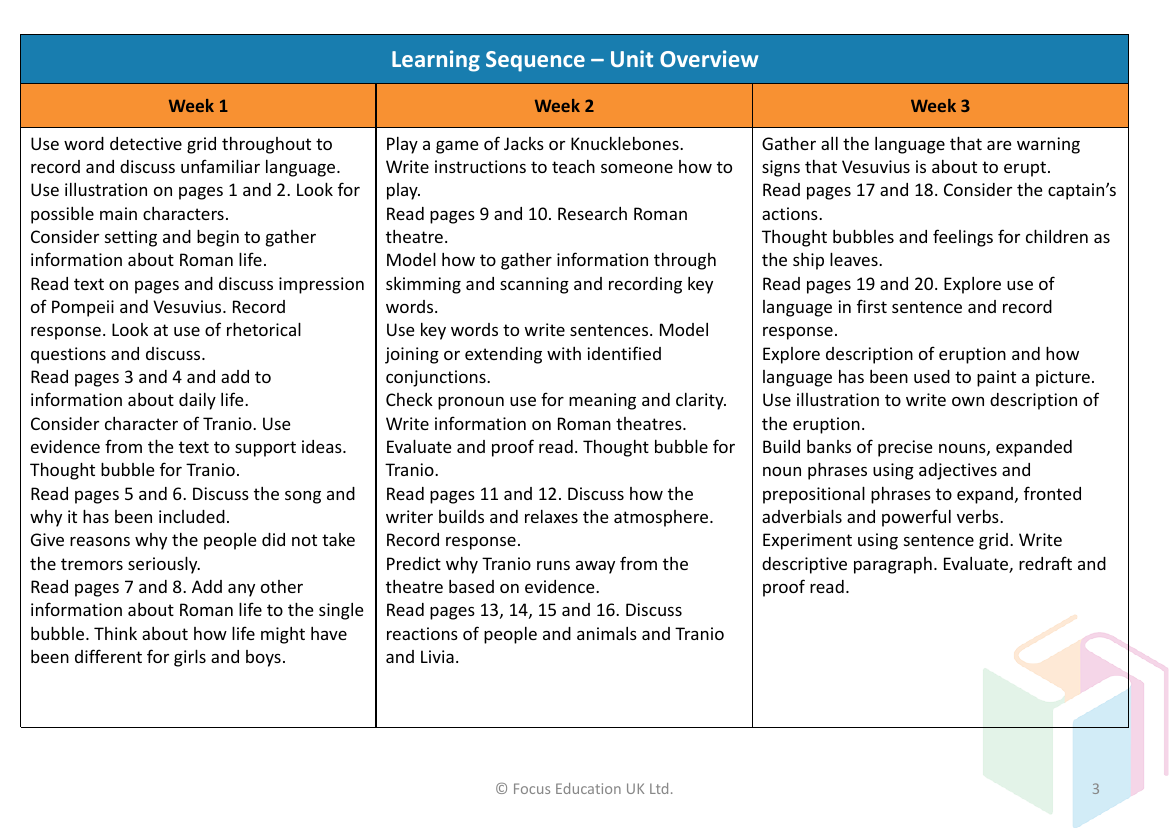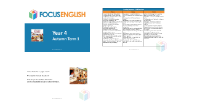Escape From Pompeii - Learning Sequence

English Resource Description
The 'Escape From Pompeii' learning sequence offers a detailed unit overview for exploring the historical event of Pompeii's destruction through a literary lens. Over the first three weeks, students engage in a variety of activities, starting with the use of a word detective grid to understand unfamiliar language while examining illustrations for clues about main characters and the setting. They delve into Roman life, using the text to form impressions of Pompeii and Vesuvius, and discuss literary devices such as rhetorical questions. As they progress through the pages, they gather insights into daily Roman life, the character of Tranio, and the significance of songs and societal reactions to natural warnings. Interactive elements like playing traditional Roman games and researching Roman theatre enhance their understanding, while writing exercises encourage them to gather information, evaluate language use, and express their thoughts creatively.
Weeks four to six continue to deepen students' comprehension and analytical skills. They reflect on the ending of the book and its message, considering the blend of fiction and non-fiction elements. Students use a variety of tools, such as the Fortune Graph for tracking emotions and the empathy wheel, to explore character perspectives and sequence events. They experiment with writing from Tranio's point of view, using fronted adverbials to express feelings and time, and revisit their descriptive writing, making improvements with the aid of a toolkit. The sequence also includes comparing the book's depiction of the volcanic eruption with a poem about a bushfire, encouraging students to draw and annotate images based on the language used, and to articulate their preferences with supporting evidence. Throughout the unit, the importance of evaluating sources, using non-fiction texts and websites for research, and refining writing through proofreading is emphasized.


